Fine motor skills
Handwriting
Handwriting is a complex skill and starts well before a child is ready to pick up a pencil and make marks.
When a baby starts reaching for their toys and begins to crawl, they are developing the postural stability and visual motor skills needed for when they start to begin to write.
Handwriting is such an important skill to have even with the ever increasing use of computers in schools. So making sure your child has the necessary building blocks in place is essential.
This handwriting guide has been created and modified with permission from Paediatric Occupational Therapy Team in Shropshire
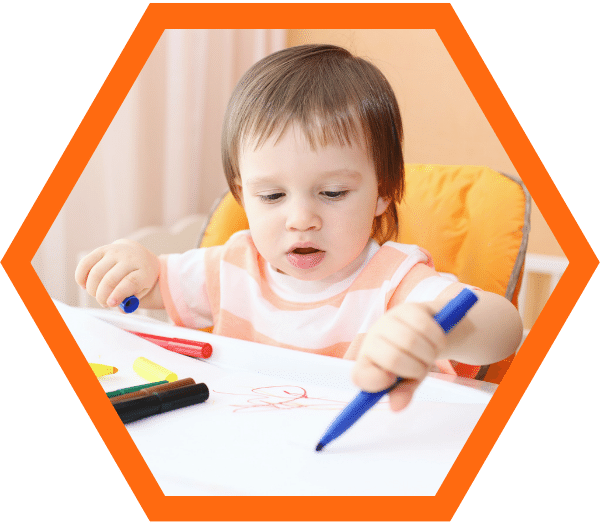
About this tool
This tool provides a set of screening questions devised to help you establish which of the activity sheets, equipment or strategies are appropriate for your child.
How to use it
1. Answer the following questions
2. Complete the recommended activity
3. Trial the recommended equipment
4. Implement the suggested strategies
5. Review the impact
Things to consider
Does your child hold their pencil in an unusual or unconventional way?
If no, scroll down
Does your child slouch when they are sitting?
If no, scroll down
Does your child hook their feet around their chair legs?
If no, scroll down
Does your child fidget in their chair?
If no, scroll down
Does your child swap hands when they are writing or drawing?
If no, scroll down
Does your child have poor control of the pencil?
If no, scroll down
Does your child produce letters, which are not formed, spaced and sized well?
If no, scroll down
Does your child has difficulty copying, recognising and matching shapes, letters and objects?
If no, scroll down
If none of the above, it does not appear that your child has any Occupational Therapy needs in relation to their handwriting skills.
If your child holds their pencil in an usual or unconventional way
Things to try
Handies: Hand skills activity sheet
Complete the Handies handwriting warm up exercises activity sheet.
Things that can help
Grippit
The Grippit’s simple design enables those with poor grip to control and hold a range of implements – pens, pencils, razors, toothbrushes, knives, forks etc. the larger ring is placed on the thumb or finger and the item to be gripped is slotted into the smaller ring. Suitable for both left or right handed use. The design ensures that it is impossible for the user to drop the implement. Supplied in packs of 6. Available in small (children), medium (ladies) and large (gents).
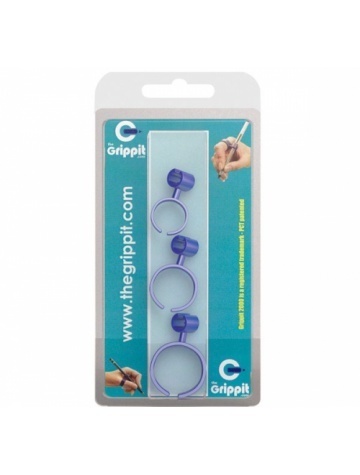
Call: 0141 336 2200
Visit: www.thegrippit.com
The Pencil Grip (Soft)
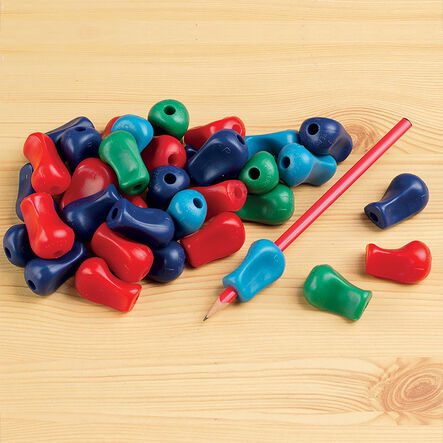
Call: 0800 1381370
Visit: www.tts-group.co.uk
Tri-Go Grip

Call: 01394 671818
Visit: www.thedyslexiashop.co.uk
Triangular pen/pencil grip
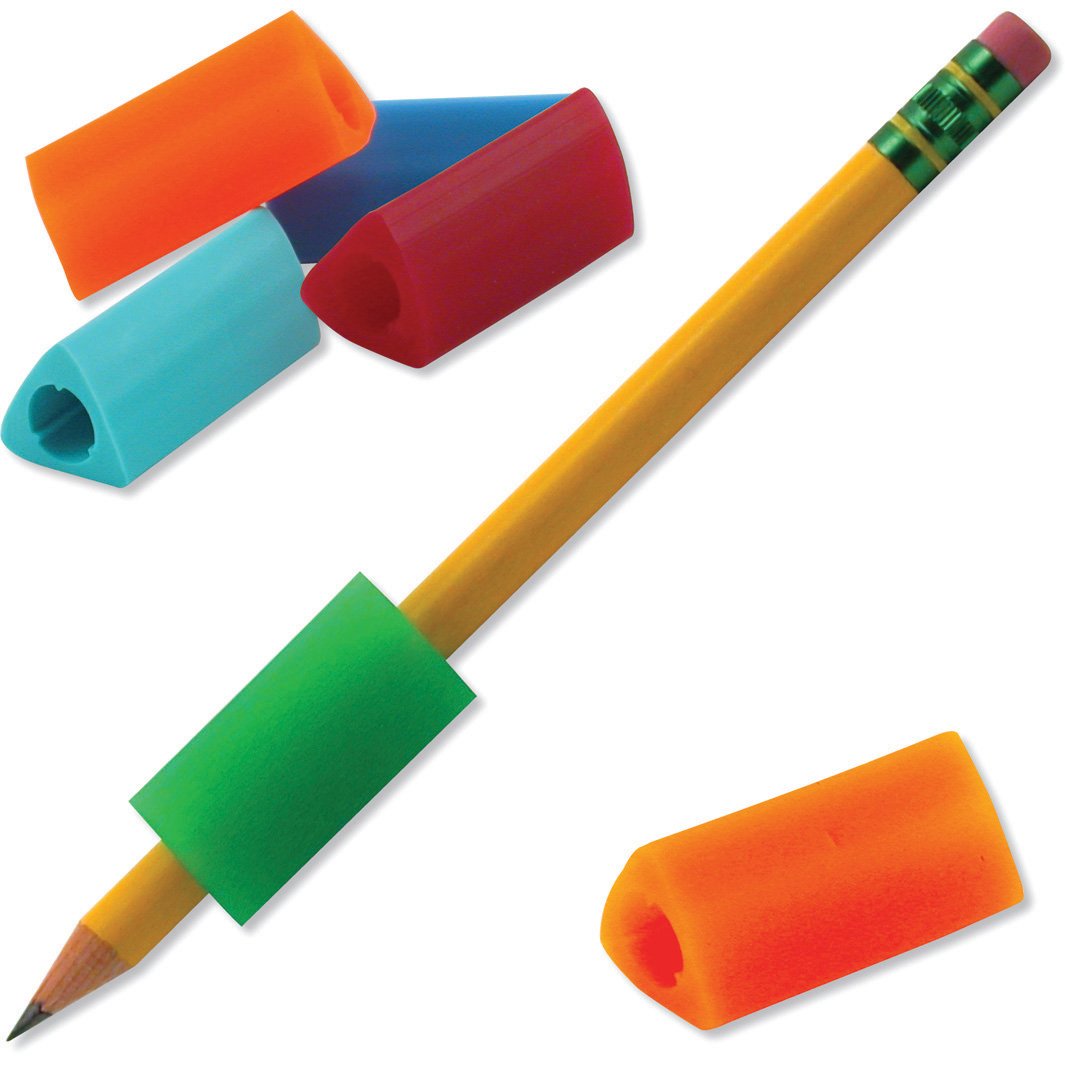
Call: 0800 1381370
Visit: www.tts-group.co.uk
If your child slouches in their seat
Things to try
Body awareness and co-ordination
Complete body awareness and coordination the activity sheet which are designed to practice and improve coordination skills and body awareness. These skills are needed to navigate around the environment.
Things that can help
Perspex writing slope
A lightweight, easily transportable slope for confined spaces. Space to store work/pencil case underneath. Ideal for older children.

Call: 01915 460191
Visit: www.sensorytoywarehouse.com
The Posture Pack
1 – The Writing Slope tilts papers and books to the correct angle for reading and writing. It’s strong yet light and has a built in carrying handle. It stores both loose and punched papers, and has a removable A4 wallet to transport papers to and from school. The tilted surface improves vision too. It allows the eyes to focus on the whole page at once, something children normally achieve by curling over the desk, creating the habit of writing and reading with their face very close to the paper. (Remember, a young child’s focal length is naturally short, so it’s inevitable they will get their eyes close to the paper, the answer is to get the paper closer to them!)
2 – The Seat Wedge tilts the seat forward to a more comfortable angle for working, making it easier to lean forward to work without slouching. The Seat Wedge fits cleverly inside the Writing Slope to provide a complete portable solution.

Call: 020 7930 8309
Visit: www.backinaction.co.uk
Angled Writing Aid
This handy writing accessory is suitable for both children and adults and is equally effective for both left and right-handed users. It is a great tool to assist when writing as it provides a stable platform and the 20-degree angle ensures greater comfort and control, whilst the textured surface prevents slipping.
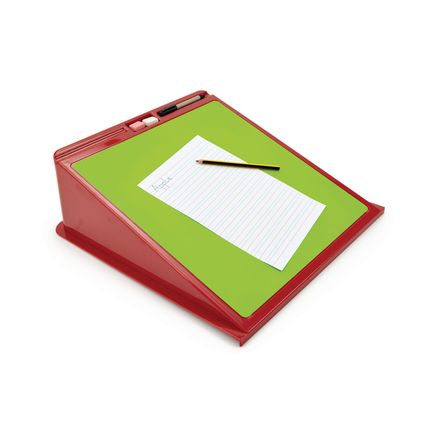
Call: 0345 120 2055
Visit: www.hope-education.co.uk
Make-it-yourself writing board
To make a writing board out of wood, use the following dimensions –
(H) 16cm
(D) 46cm
(W) 47cm
Fix a strip of wood on the bottom at the front to act as a lip to stop it sliding. Dycem or the Write Mat will help to stop the paper sliding.
Height adjustable bath step (for feet!)
This step is designed as an adjustable height bath step, however is a great foot support. The step comprises four layers which join together allowing the height to be adjusted to suit the individual user.

Call: 0161 8500884
Visit: www.abilitysuperstore.com
If your child hooks their feet around their chair legs
Things to try
Body awareness and co-ordination
Complete body awareness and coordination the activity sheet which are designed to practice and improve coordination skills and body awareness. These skills are needed to navigate around the environment.
If your child fidgets in their chair
Things to try
Organising and alerting strategies
Organising and alerting activities can help any child who is either over or underactive become focused and attentive. These activities are particularly useful during
transitions in the school day and a lot of them are great as a whole class activity!
If your child swaps hands when they are writing or drawing
Things to try
Using two hands
Complete the activity sheet. These activities have been put together to improve
bilateral hand skills. They should help with skills that require the use of two hands such as dressing, tying shoelaces or using a knife and fork.
If your child has poor control of the pencil
Things to try
Hand skills
These activities have been put together to improve hand strength and fine motor skills, thereby helping handwriting skills.
Things that can help
Write from the start
The Write From The Start programme offers a radically different and effective approach that will guide children through the various stages of perceptual and fine-motor development to lay the foundations for flowing, accurate handwriting.

Call: 01394 671818
Visit: www.thedyslexiashop.co.uk
If your child produces letters, which are not formed, spaced and sized well
Things to try
Letter formation
Complete the activity sheet. These activities have been put together to practice and improve letter formation skills, thereby helping handwriting skills.
Things that can help
Write from the start
The Write From The Start programme offers a radically different and effective approach that will guide children through the various stages of perceptual and fine-motor development to lay the foundations for flowing, accurate handwriting.

Call: 01394 671818
Visit: www.thedyslexiashop.co.uk
If your child has difficulty copying, recognising and matching shapes, letters and objects
Things to try
Memories activity sheet
Complete the memories activity sheet to aid visual memory skills.
Visual perception activity sheet
Complete the activity sheets to improve your child’s ability to interpret information that they are seeing.
Letter formation activity sheet
Complete the activity sheet to help your child improve their letter formation skills.

